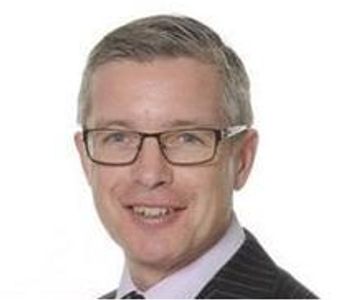
Solo Antiplatelet Therapy Sufficient in Peripheral Arterial Disease
HAMILTON, Ontario -- Antiplatelet therapy alone is as effective in peripheral arterial disease as adding an oral anticoagulant, and it's safer, researchers reported.
HAMILTON, Ontario, July 18 -- Antiplatelet therapy alone is as effective in peripheral arterial disease as adding an oral anticoagulant, and it's safer, researchers reported.
The two-drug combination was not more effective than single drug treatment in preventing major cardiovascular complications and was associated with a more than three-fold increase in life-threatening bleeding, according to a report in the July 19 issue of the New England Journal of Medicine.
Antiplatelet drugs reduce the risk of myocardial infarction, stroke, and death from cardiovascular causes associated with atherosclerotic peripheral arterial disease, said Sonja Anand, M.D., Ph.D., of McMaster University, here, but the role of oral anticoagulant agents in the prevention of cardiovascular complications has been unclear.
To explore it, she and fellow investigators conducted the randomized open-label Warfarin Antiplatelet Vascular Evaluation (WAVE) trial.
They assigned 2,161 patients with peripheral arterial disease to combination therapy with an antiplatelet agent and an oral anticoagulant or to antiplatelet therapy alone.
The patients, ages 35 to 85, came from 80 centers in Canada, Poland, Hungary, Ukraine, China, the Netherlands, and Australia.
Antiplatelet agents used in the trial included aspirin, ticlopidine (Ticlid) and clopidogrel (Plavix). Warfarin was used for oral anticoagulation in five countries and acenocourmarol was used in Poland and Hungary.
At a mean follow-up of 35 months, myocardial infarction, stroke, or death from cardiovascular causes occurred in 132 of 1,080 patients (12.2%) receiving combination therapy and in 144 of 1,081 patients (13.3%) receiving antiplatelet therapy alone (relative risk, 0.92; 95% confidence interval, 0.73 to 1.16; P=0.48), the authors said.
When taking severe ischemia of the peripheral or coronary arteries that required urgent intervention into account, the researchers noted that the number rose to 172 patients (15.9%) receiving combination therapy compared with 188 patients (17.4%) receiving antiplatelet therapy alone (relative risk, 0.91; 95% CI, 0.74 to 1.12; P=0.37).
Life-threatening bleeding, including hemorrhagic stroke, occurred in 43 patients (4.0%) receiving combination therapy compared with only 13 patients (1.2%) receiving antiplatelet therapy alone (relative risk, 3.41; 95% CI, 1.84 to 6.35; P<0.001), the authors said.
Moderate bleeding was also increased in the patients on the combination therapy (2.9% versus 1.0%, relative risk 2.82, P=0.002).
The rates of serious bleeding among patients getting combination therapy were higher than in a trial of patients with coronary artery disease, the researchers noted.
The reason for this difference, they said, may be that patients with peripheral arterial disease are older and have more systemic atherosclerosis, including cerebrovascular disease, and more co-existing conditions.
A potential limitation of the trial, they noted, was its open-label design, which permitted patients and physicians to know the treatment given. However, they added, all trial endpoints were centrally judged by a blinded committee.
According to their data, the researchers said, treating 1,000 patients with combination therapy compared with antiplatelet therapy alone for three years would lead to 24 fewer cardiovascular events but 28 more episodes of life-threatening bleeding. This would result in a net increase in serious adverse outcomes, they said.
Their findings highlight the need to evaluate alternatives to vitamin K antagonists in patients with peripheral arterial disease, they added.
In an accompanying editorial, Emile R. Mohler III, M.D., of the University of Pennsylvania, wrote that the risks of serious bleeding and hemorrhagic stroke in the WAVE trial were higher than those seen in the post-myocardial infarction studies that used combined treatment.
The reasons for the increased likelihood of bleeding in patients with peripheral arterial disease are unknown, he noted, but, as the WAVE researchers suggested, may include advanced age, more widespread atherosclerosis, as well as decreased integrity of the vessel wall and increasing microvascular fragility.
Although there may be some patients for whom the bleeding risks are lower, resulting in a risk-benefit ratio that favors adding an anticoagulant, the data from the WAVE trial do not provide any evidence for this, Dr. Mohler wrote.
At this time, he said, the data indicate that antiplatelet treatment alone affords a better outcome than does combined therapy.
Further information, he added, about the pathobiologic basis for bleeding in these patients is needed to develop successful clinical strategies to prevent bleeding and to devise safer antiplatelet and anticoagulant drugs.
Dr. Mohler reported receiving lecture fees from Bristol-Myers Squibb, Sanofi, and Astra-Zeneca and grant support from Bristol-Myers Squibb, and Sanofi. He reported no other potential conflicts of interest.
Newsletter
Enhance your clinical practice with the Patient Care newsletter, offering the latest evidence-based guidelines, diagnostic insights, and treatment strategies for primary care physicians.


























































































































































































































































































